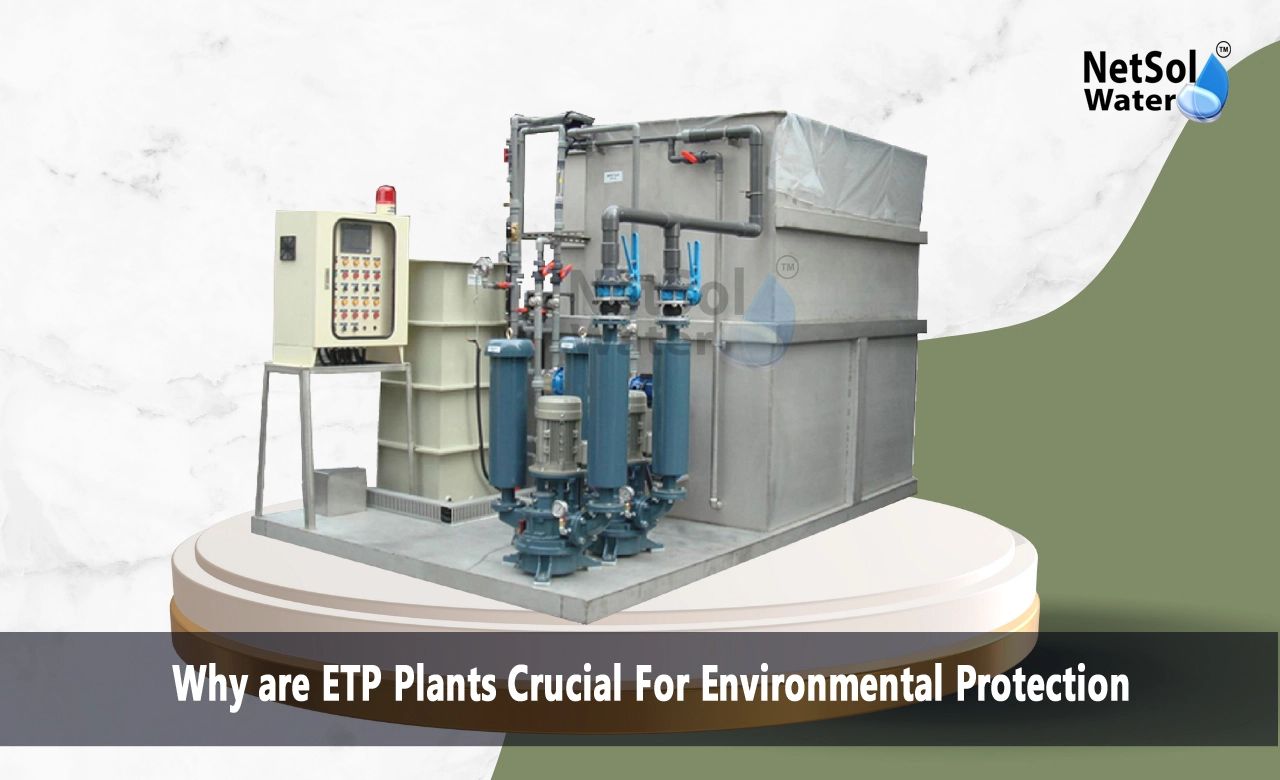Why are ETP Plants Crucial For Environmental Protection?
In our world, industrial growth often fights with environmental concerns. Effluent treatment plants clean and purify wastewater before releasing it back into the environment. They utilize physical chemical and biological techniques to remove toxins from industrial and municipal wastewater. Their purpose is to produce effluent that meets environmental requirements and reduces risk to aquatic ecosystems and human health.
The Environmental Impact of Untreated Effluents
Untreated industrial effluents can harm the environment. These wastewaters often contain heavy metals organic compounds and hazardous substances. When discharged untreated they:
1. Contaminate water bodies hurting aquatic life and disrupting ecosystems.
2. Poison animals and plants resulting to population decreases and biodiversity loss.
3. Pose major health dangers to people reliant on contaminated water sources.
4. Cause algal blooms decreasing oxygen levels in water bodies and generating dead zones.
The Role of ETPs in Mitigating Environmental Damage
ETPs defend against various environmental risks. They safeguard our environments by:
Removal of Harmful Substances
ETPs remove or decrease contaminants in wastewater using:
· Physical processes: Screening sedimentation and filtering remove solid particles and suspended materials.
· Chemical treatments: Coagulation flocculation and disinfection neutralize hazardous chemicals and bacteria.
· Biological methods: Microorganisms break down organic chemicals into less hazardous components.
These techniques greatly reduce the environmental impact of industrial discharges.
Water Conservation and Reuse
ETPs facilitate water recycling and reuse. Industries can safely use treated wastewater for:
· Industrial processes
· Cooling systems
· Landscape irrigation
· Groundwater recharging
This conserves freshwater resources and minimizes the overall water footprint of industrial processes.
Compliance with Environmental Regulations
ETPs assist enterprises satisfy environmental standards and laws. They guarantee discharged water fulfils quality requirements, enabling firms to operate ethically and avoid legal penalties. This compliance balances industrial expansion with environmental conservation.
Protecting Aquatic Ecosystems
ETPs maintain aquatic biodiversity by purifying wastewater before release. Clean effluent preserves the delicate balance of aquatic ecosystems allowing fish plants and bacteria to thrive. This promotes the broader food chain and ecological stability.
Reducing Greenhouse Gas Emissions
Advanced ETPs capture and utilize biogas produced during the treatment process. This minimizes methane emissions and provides a renewable energy source. Some ETPs use this biogas to power their activities further reducing their carbon footprint.
Challenges and Innovations in Effluent Treatment
ETPs confront various challenges:
1. High energy consumption: Traditional treatment techniques can be energy-intensive. Innovations in energy-efficient devices and renewable energy sources solve this challenge.
2. Handling new contaminants: New pollutants including medicines and microplastics challenge current treatment approaches. Researchers use new approaches such as membrane filtration and advanced oxidation procedures to combat these pollutants.
3. Sludge management: The treatment process generates sludge requiring suitable disposal. Innovative technologies like anaerobic digestion and sludge-to-energy conversion turn this waste into a resource.
4. Cost considerations: Building and managing ETPs can be expensive especially for smaller enterprises. Governments and environmental organizations work on incentives and support systems to encourage widespread usage of wastewater treatment.
Best Practices for Effective Effluent Treatment
To optimize the environmental benefits of ETPs companies and operators should:
1. Maintain and monitor regularly: Consistent upkeep and performance monitoring guarantee ETPs run at peak efficiency.
2. Train employees: Well-trained staff optimize factory operations and respond efficiently to difficulties.
3. Improve continuously: Staying informed with the latest technology and treatment approaches boosts the effectiveness of ETPs.
4. Reduce at source: Implementing cleaner industrial processes minimizes the volume and toxicity of wastewater making treatment more doable.
5. Collaborate with experts: Partnering with environmental consultants and academics leads to novel solutions and enhanced treatment methods.
While tough to achieve ZLD represents the ultimate ideal in wastewater control and environmental preservation.
Conclusion
Effluent treatment plants serve an important role in combining industrial progress with environmental management. They guard our water resources protect ecosystems safeguard public health and permit sustainable industrial expansion. As we face increasing environmental concerns the importance of ETPs will only grow.
Investing in treatment technology encouraging best practices and fostering innovation in wastewater management promises a cleaner greener future for generations to come. The march towards total environmental preservation continues but effluent treatment plants indicate our dedication to preserving the delicate balance of our planet's ecosystems.
To explore customised commercial RO plants, Industrial RO plants, ETP or STP solutions for your needs in your areas and nearby regions, contact Netsol Water at:
Phone: +91-965-060-8473, Email: enquiry@netsolwater.com



